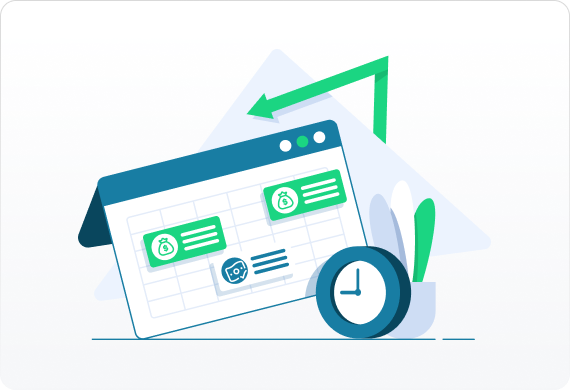
What Do I Need to Qualify?
Below is a list of the general requirements to get approved for business funding with our basic program.

How Do I Apply?
Applying has never been easier. You can either call our toll free number 24 hours 7 days a week at:
OR

Apply Directly to One Source!
Work with a direct lender and get a business loan as fast as the same day. Shield Funding offers competitive rates and terms on all it’s funding programs. Apply now with a trusted lender that has been helping business owners secure working capital for almost two decades.
It might not be obvious, but grocery stores have significant equipment costs. Refrigeration, freezers, carts, point-of-sale systems, fixtures, and shelving are customer-facing costs. But you’ll also have backroom equipment, like a forklift, baler, handtrucks, and storage equipment.
Grocery Outlet estimates around $135,000 in equipment costs for a new grocery store. But that cost will fluctuate with the size of your store. If you’re expanding your current store, you probably won’t need that much. But a large new location could accrue even more cost.
Keep in mind that additional offerings mean additional equipment, too. If you have a deli, you’ll need more refrigeration, slicers, packages, scales, and so on. A bakery will require ovens and display cases. Depending on the state you live in, you may need a lockable section for beer and wine.
Every business has operating costs, but grocery stores have some unique issues. For example, utilities can be expensive for a grocery store, up to $4 per square foot per year because of high energy usage.
Refrigeration, lighting, air conditioning, cash registers, and other supermarket equipment can use a lot of energy. A 2,000-square-foot-store might incur an annual electric bill of $8,000. That’s a significant amount of cash.
Property taxes on a large building are expensive. And you’ll probably want to invest in marketing and advertising to drive business, especially if you’ve opened a new location or expanded your current store.
Many grocers are also starting to use more technology to boost their margins. Self-checkout lanes, scheduling software, store apps, and other advances cost money on a regular basis, and it’s important to account for those costs.
Putting food on the shelves of your grocery store is expensive, especially with rising meats and commodity prices. Getting started at a new location can cost $100,000 or more. Save-a-Lot estimates that initial inventory could be up to $200,000 or more. And that’s just to put food on the shelves.
Grocery stores also have high inventory turnover, so you’ll need enough cash on hand (or working credit, which we’ll discuss later) to make sure you can keep things in stock. Running out of inventory will damage your reputation quickly, and you don’t want to risk that.
Depending on the type of store you run and where you’re located, you may also have additional costs like beer and wine. And if you’re planning on stocking specialty foods like fancy cheeses, sushi, or local products, those costs could be higher.
Even if you’re not expanding to a new store, you can still pay tens of thousands for inventory to stock an expansion or an addition to your current grocery store.
A small corner store might only have a handful of employees. A supermarket, on the other hand, may have 70 or more full-time employees, and that number is growing as a result of the pandemic impact on the nation. The number of people you employ is directly related to the size of your grocery store.
While you may be tempted to hire less employees to save on costs, it’s worth noting that many retailers who spend more money on their employees are also very profitable.
Your store probably isn’t the only one your customers can shop at. Which means you need to provide a great customer experience. Long lines, trouble finding employees, and difficulty stocking shelves are going to make customers search for other options.
Finding the right number of employees is not easy. Especially when you’re expanding. It might take some time to get it right, but it’s one of the most important things you can do to create a positive experience.
Of course, you need to pay for those employees. Full-time cashiers might make around $30,000 per year. Storeroom employees might cost you a little less. But managers might be closer to the $50,000 range.
Some states require that you offer benefits to full-time employees, too. When you add benefits and employment taxes, employees can cost 1.24 to 1.4 times their base salary. So that $30,000 cashier might cost you $42,000.That all adds up.

